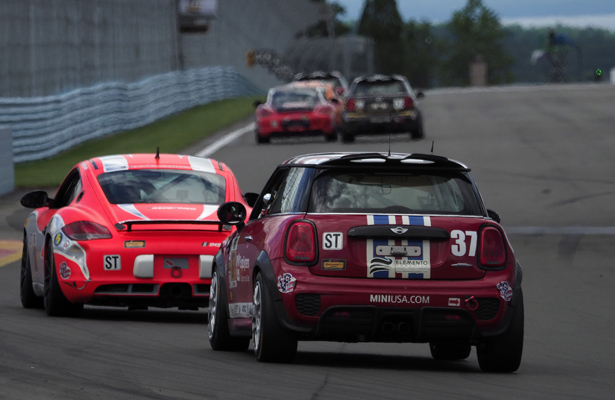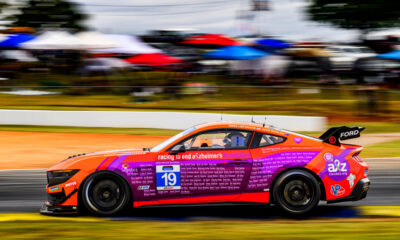
Photo: Mike Levitt/IMSA
IMSA President Scott Atherton says the future of the ST class in the Continental Tire SportsCar Challenge will depend on customer demand, as the sanctioning body pushes forward with the introduction of the new TCR class next year.
Announced last month, TCR will join the SRO GT4-based GS category and ST in the series in an expanded three-class format next year, with no firm expiration date yet set for the largely production-based ST cars, which currently makes up more than half of the Continental Tire Challenge grid.
Atherton said they taking a wait-and-see approach on the category’s future, which could depend on the level of activation in the new global touring car platform.
“The market will dictate,” he told Sportscar365. “If we have a paddock full of ST cars and the feedback is we want to keep racing these and it’s certainly working… it wouldn’t be out of the question to extend that.
“The [long-term] vision would be for TCR, a strong preference for a two-class format, but to be conscious not to obsolete equipment before its time.
“I think you’ve already seen a decrease in ST content, and with what we believe to be coming in terms of the manufacturer involvement in the car choices that teams will have, [TCR] will be a very attractive opportunity.”
The TCR class, which will slot between GS and ST in performance levels, will debut in January’s season-opening round at Daytona, running in identical specification to the emerging global platform, which is currently used in nearly 20 series around the world.
Atherton he doesn’t have a minimum or maximum number of TCR entries in mind for the first year but said the initial interest level has been promising, particularly from new manufacturers.
“We’re working with several manufacturers now, some of whom have already announced formally that cars that either exist or soon will exist and others that are [working on projects],” he said.
“The minute we confirmed TCR, we started getting phone calls and emails from manufacturers saying, ‘Thank you for confirming this as early as you did because this makes a big difference in our ability to plan.’
“I met with one manufacturer [last weekend] who is getting on a plane Monday morning to fly to Europe to look at their existing content and what is coming, what they are planning on bringing to the United States, specifically in the TCR category.”
As is the case in the other categories utilizing global platforms, Atherton said participation in TCR will be subject to manufacturer agreements, thus preventing European-spec models or manufacturers that don’t sell production cars in North America, such as Seat, Lada or Peugeot, from taking part in the series.
“The same expectations and the same criteria that we have for cars participating with us will still apply in that it’s not that you simple bring the car and go,” Atherton said.
“There has to be a broader relationship and a commitment to activate.
“It’s nowhere in relation to, it’s not similar to a WeatherTech [Championship] commitment, but there is some expectation that any manufacturer that participates here.”
With the days of the ST class numbered, amid the arrival of the global GT4 and TCR platforms that feature mass-produced homologated cars, the Continental Tire Challenge is set to eventually move on from its roots as a street tuner-based series.
Atherton said the shift has become inventible, largely due to the increased sophistication of electronics in production cars, which has made it challenging for teams to build and adapt their own cars for racing in a cost-effect manor.
“That era of being able to take a street car and build it on a one-off basis into a race car has passed,” he said.
“The best thing we can do is make the best decisions as possible to recognize that and then put ourselves in the position where we’ve got the best opportunities for teams that want to continue racing at that level to have access to the best products possible.
“We believe we’ve done that with GT4 and now TCR.”


























